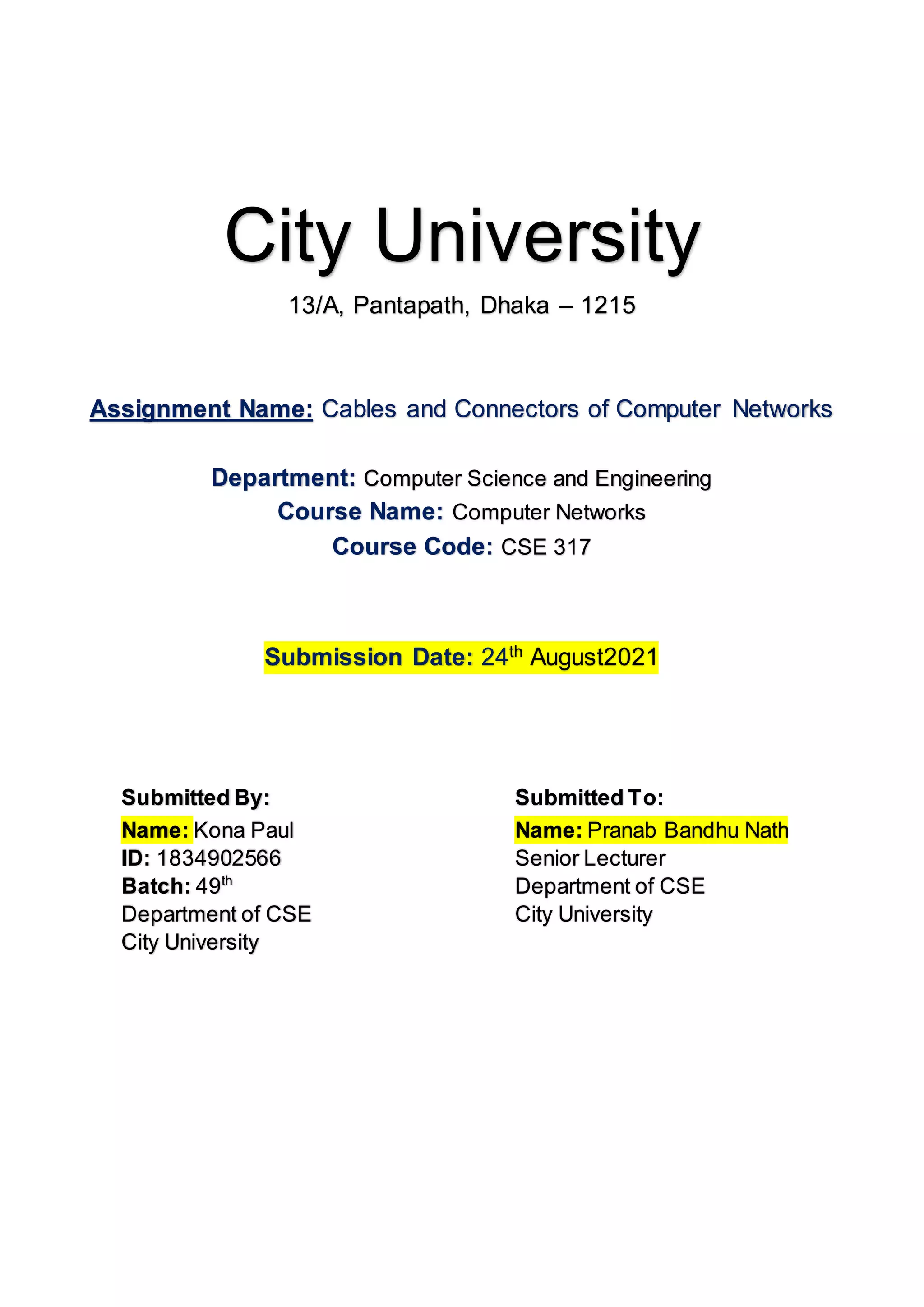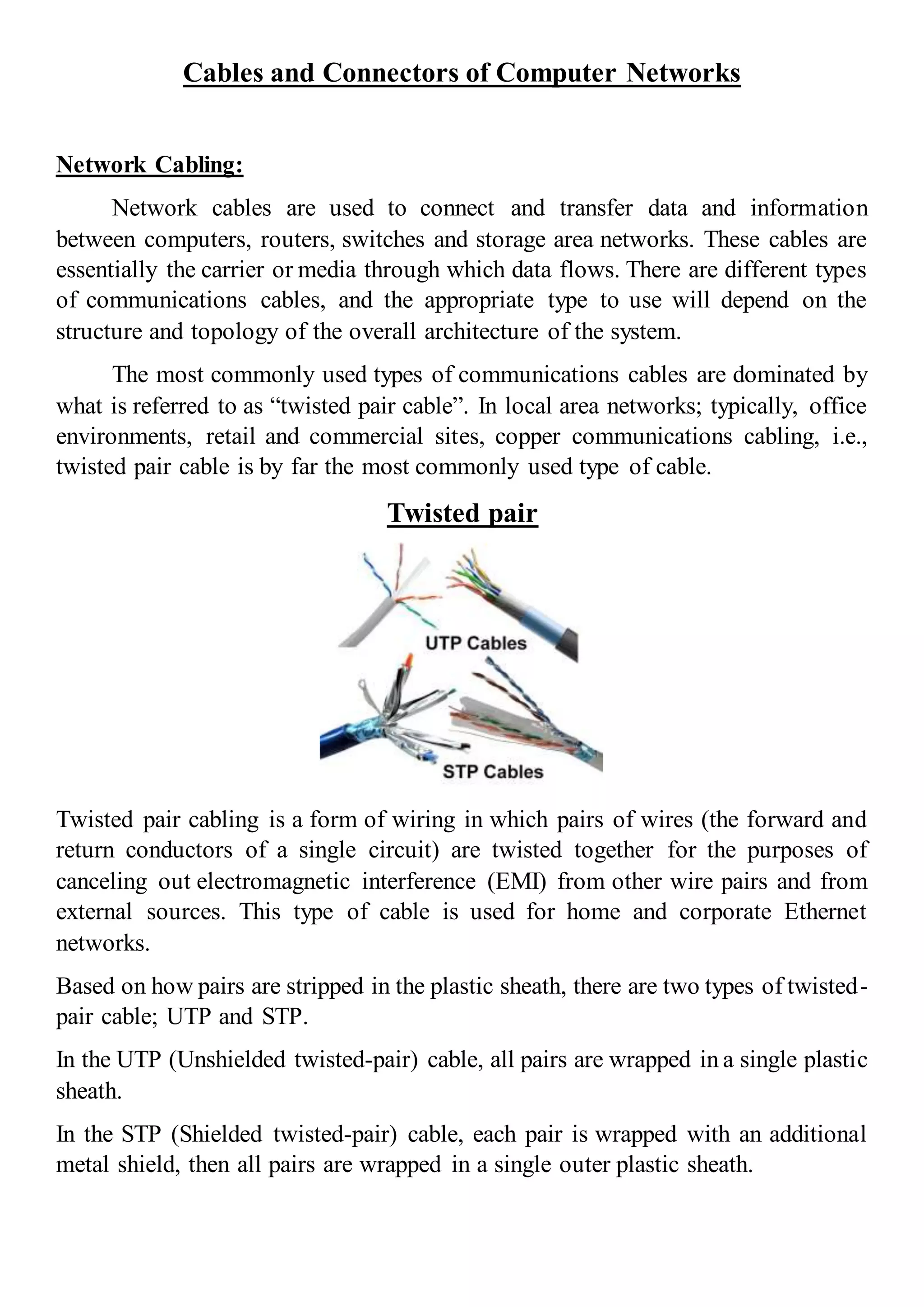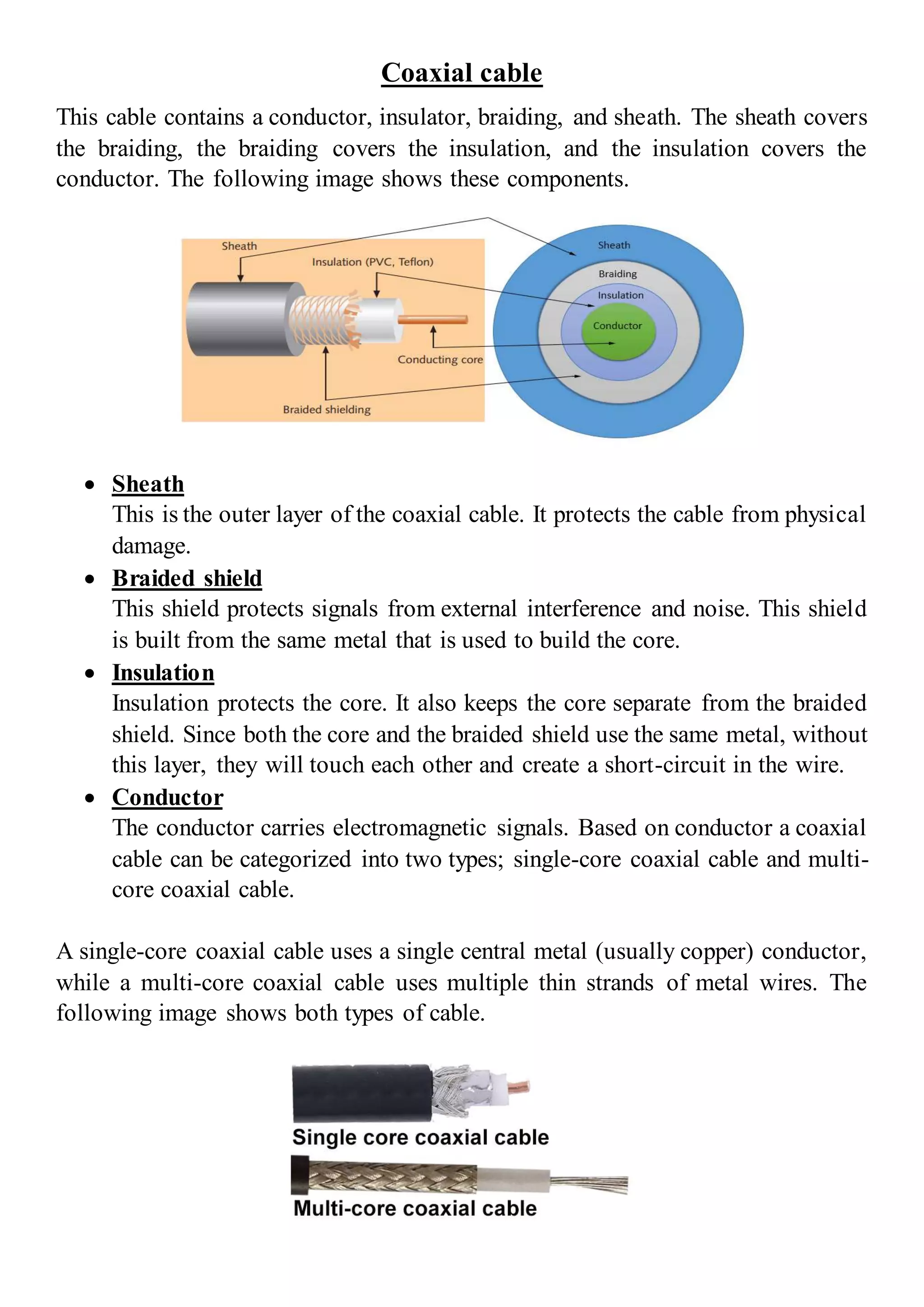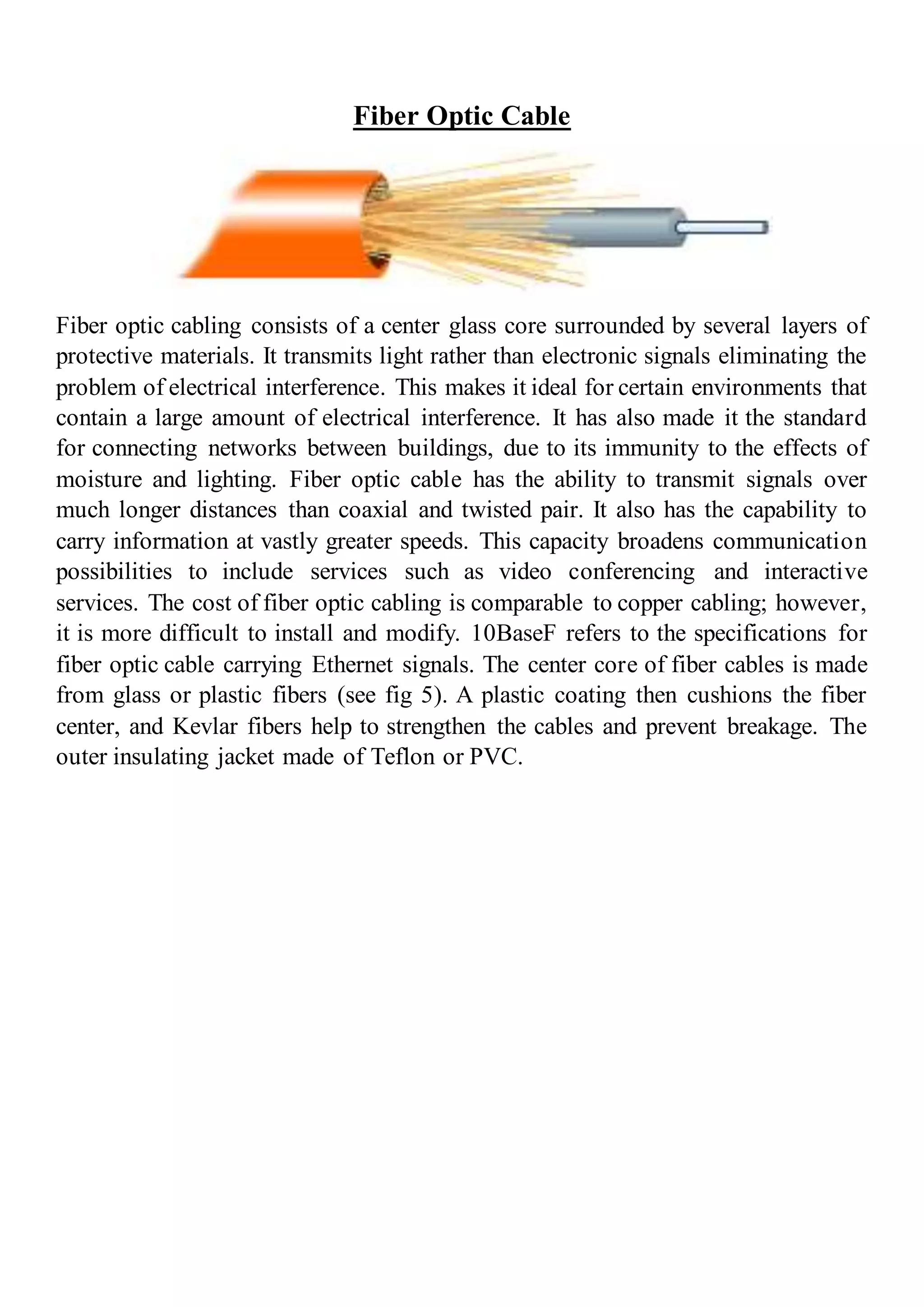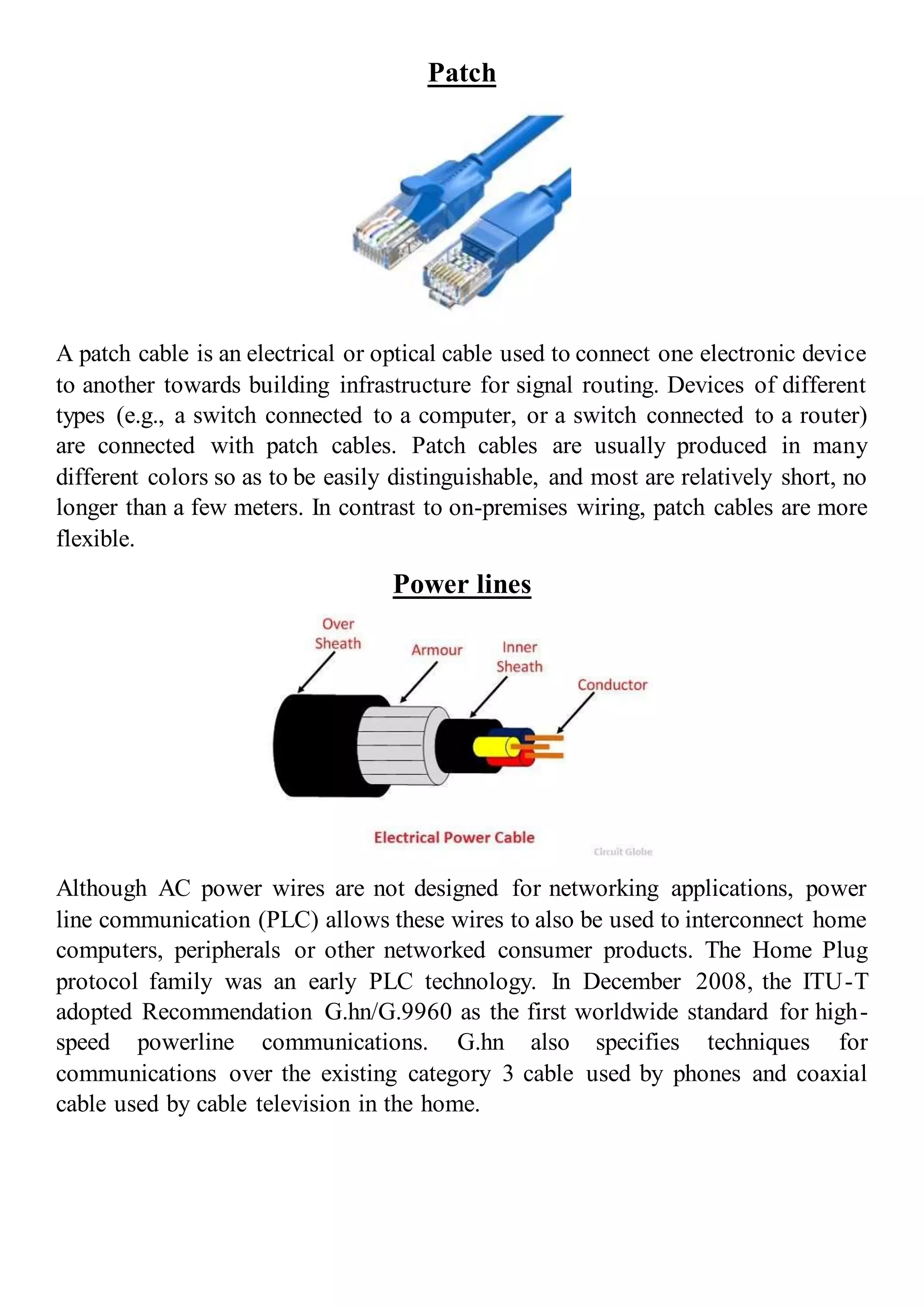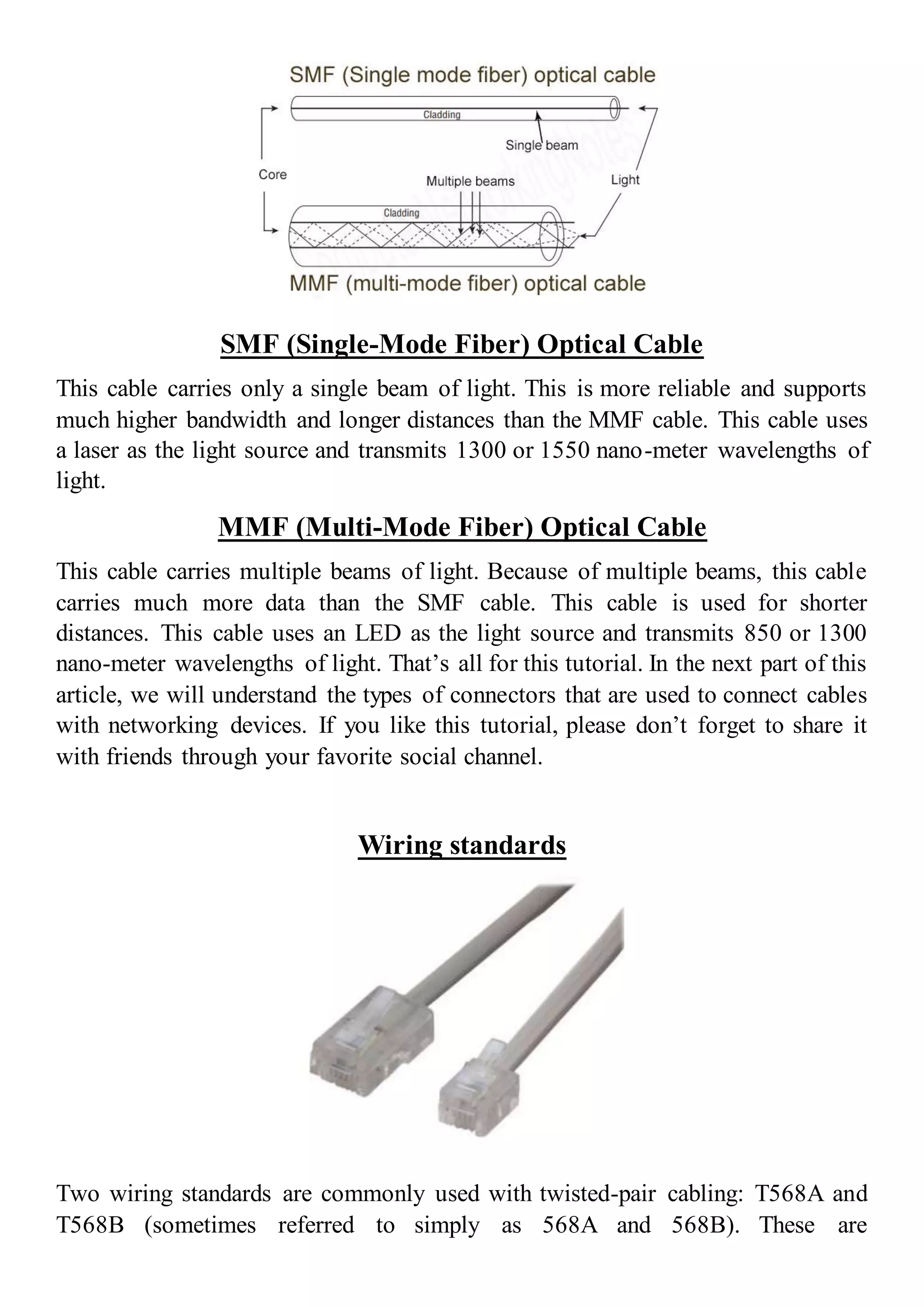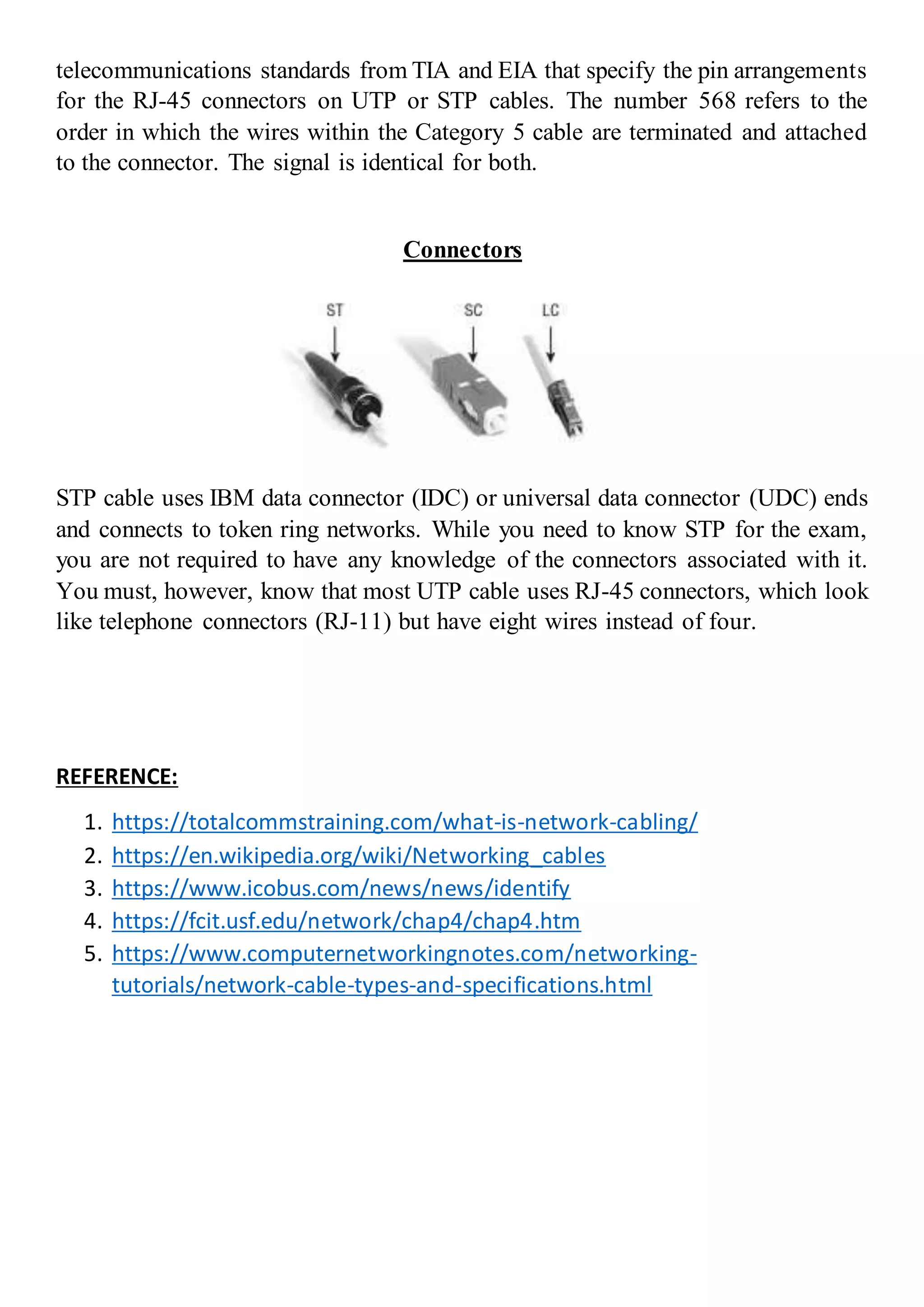The document provides a detailed overview of various types of cables and connectors used in computer networks, including twisted pair, coaxial, and fiber optic cables. It explains the characteristics and applications of each cable type, emphasizing their differences in terms of data transmission capabilities, installation complexity, and use cases. Additionally, it mentions wiring standards and connector types commonly associated with networking, such as RJ-45 connectors for twisted pair cables.
